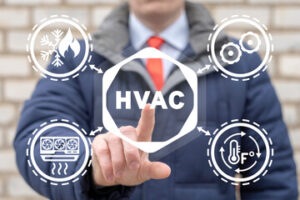Concrete is an integral part of many commercial and residential construction projects. Choosing the right contractor ensures that your concrete project meets building codes for safety and looks professional.

Ask potential contractors to provide references from previous clients and contact information. Talk to these past clients about the contractor’s experience, quality of work, timeliness, and cost. Contact Concrete Contractor Columbus for professional help.
When selecting a concrete contractor for your construction project, ask about their level of experience and past work. A reputable contractor will be able to provide client testimonials and references. Additionally, they should be able to explain the process of concrete construction and how they handled challenges during the project.
A thorough understanding of concrete mixtures and curing processes is also important. A concrete contractor should be able to recommend the right type of mix for your specific project, ensuring durability and long-lasting results. In addition, a concrete contractor should be able to discuss the latest advancements in concrete technology and techniques that allow for more durable and aesthetically pleasing results.
Inquire about whether the concrete contractor offers a warranty on their work. A reputable contractor will stand behind their work and offer a warranty to protect against issues that may arise after the completion of the project. Additionally, ask about how they keep clients informed about the progress of their projects and how they handle any unforeseen challenges that might arise during construction.
Concrete contractors often learn their trade skills through hands-on experience and on-the-job training. Many begin their career as an apprentice with a company specializing in concrete construction services. Others may attend a vocational school or technical college program in preparation for a career in construction. Regardless of how they acquired their skills, a concrete contractor must possess a strong passion for the craft and an ability to effectively communicate with clients and general contractors.
While it is not necessary for a concrete contractor to be licensed, it is recommended that they have liability insurance and worker’s compensation coverage. These credentials demonstrate adherence to industry standards and provide protection in case of accidents or damages during the construction process.
A good concrete contractor will be familiar with the local building codes and regulations that apply to their construction projects. They should also be able to read blueprints and have the knowledge needed to plan large-scale construction projects. Lastly, they should be knowledgeable about preparing the site for construction, including clearing debris and laying drainage systems.
Licenses
A concrete contractor’s license proves they meet industry standards, legal requirements, and qualifications to perform work. This also shows that they have the experience and knowledge to handle any challenges that may arise during a project. Choosing a licensed concrete contractor ensures you’re working with a professional who is dedicated to delivering quality results on time and within budget.
Licensing requirements vary by state, but most require applicants to have at least a high school diploma or GED certificate and relevant work experience. Some states allow college credits or degrees to be substituted for some part of the required work experience, which can be an advantage for candidates with educational qualifications outside of the trade. Additionally, most licensing boards require a background check and fingerprinting.
Concrete contractors are responsible for a wide range of tasks related to the use of concrete, a vital construction material in both residential and commercial projects. Their duties include laying concrete foundations, building reinforced concrete buildings and structures, paving concrete driveways and sidewalks, and installing retaining walls. Many concrete contractors are skilled in decorative concrete work, such as stamping and staining, which requires creativity and attention to detail.
When interviewing potential concrete contractors, be sure to ask for references from past clients and examples of their work. A reputable contractor will have no problem providing these references, which can help you gauge the level of their workmanship and commitment to customer satisfaction. Additionally, be sure to inquire about insurance. Concrete work can be dangerous, so hiring a contractor with insurance will protect you from any potential damages or injuries that could occur during the project.
While a concrete contractor’s primary focus is on constructing new structures, they can also repair existing ones. If you have an old concrete surface that needs to be repaired, a contractor can apply a fresh layer of asphalt or concrete and provide a smooth finish that will look brand new. They can also repair cracks, patch holes, and replace damaged sections of concrete.
Experience
Concrete professionals work with concrete every day, so they have in-depth knowledge of what strategies work best for each type of project. They understand how to prepare and place the concrete correctly, so it has long-lasting durability and an attractive appearance. They also know how to optimize materials usage, avoiding waste and keeping costs low.
When searching for a contractor, look for online reviews and a portfolio of photographs of their previous projects. In the digital age, most contractors post images of their work on their website or social media pages, so you can easily find examples of patios, sidewalks, driveways, and foundations that have been repaired or replaced. When evaluating a concrete contractor, focus on the quality of their work rather than price.
A professional concrete contractor can complete construction or repairs in a timely manner and within budget. They will provide an estimated timeline for completing the project and stay in touch throughout the process. They will also discuss any potential challenges that may impact the timeline and provide alternatives to ensure they meet all requirements.
In addition to meeting the qualifications listed above, a good concrete contractor should have a passion for their craft. Their love of creating something tangible and lasting helps them stay focused on the details of each project and gives them a sense of pride in their work.
Concrete is a vital building material that plays an integral role in many commercial and residential construction projects. Concrete contractors are responsible for installing and repairing these important structures, so it is crucial to hire one with the right experience and skills.
If you are planning a concrete project, ask your local ready-mix supplier who their top two contractors are for the type of job you have in mind. Contact those contractors and see if they can give you an estimate over the phone or visit your site to determine a more precise cost. Be sure to consider any extras that might affect the final price, such as adding curb appeal or addressing an existing crack in the concrete.
Customer Service
A quality Concrete Contractor will take the time to get to know you and your project. They will understand your unique vision and work with you to find solutions that fit within your budget. They will also be punctual, professional, and communicate well.
Look for a contractor who offers clear quotes and contracts. You should be able to compare estimates side by side to see where exactly your money will be going, including labor, materials, and additional fees. This will help you avoid any surprises later on.
In addition to the monetary aspect of the job, you should ask about the type of materials they use, construction methods, and warranty coverage. You can often find this information on their website or by asking for references from past clients. This will give you an idea of how their projects hold up over time and if they are as reliable as they claim to be.
Lastly, you should consider whether or not a Concrete Contractor provides adequate safety measures for their workers and for customers who may be on-site during the construction process. Choosing a company that follows OSHA regulations and prioritizes safety is critical to keeping everyone on the job site safe.
Choosing the right Concrete Contractor is essential to the success of your construction or renovation project. By examining their qualifications and experience, looking at their portfolios and references, getting detailed quotes, and reviewing insurance and safety policies, you can be sure that you are hiring the best company for the job. Then, you can relax and focus on your project knowing that it is in good hands.


